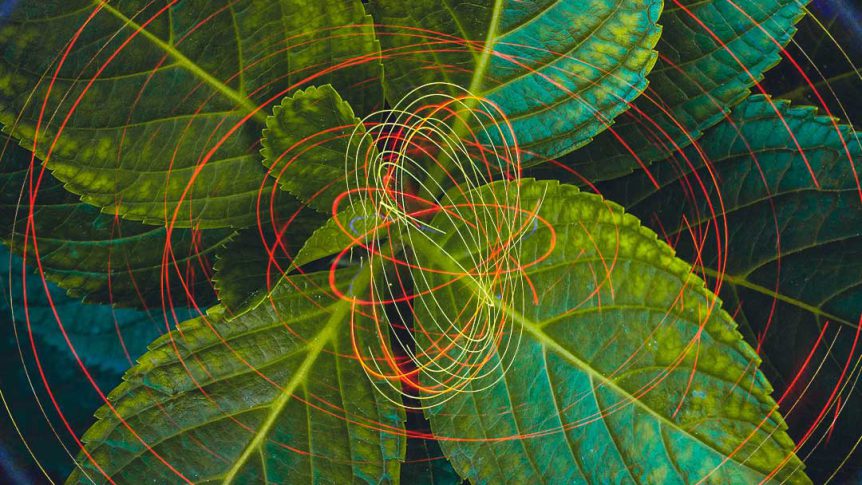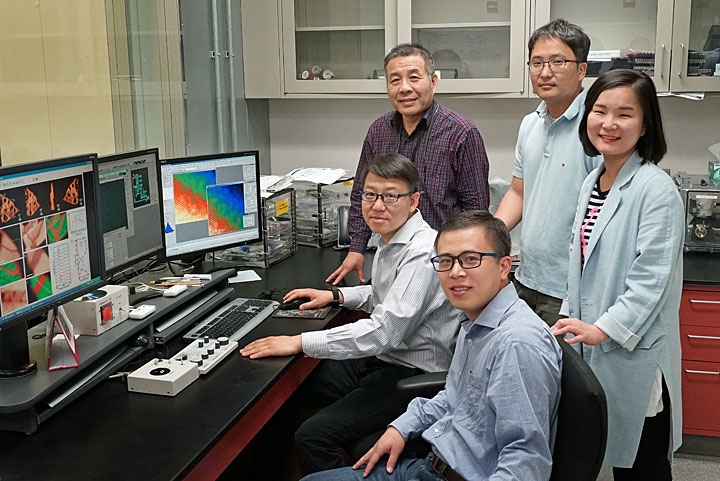Feature image credit: Victor Tangermann Futurism ponders, “Sugar, Light, And A New Type of Chemistry — What It May Take To Wean Us Off Fossil Fuels” in an article by Dan Robitzki. The topic brings a new term into your editor’s vocabulary – BioLEC – Bioinspired Light Escalated Chemistry. The goal of such chemistry is to use the energy of two photons, “the tiniest quantifiable units of light, to power chemical reactions.” This takes us into how trees and other photosynthesizing plants use quantum theory to make things grow. Trees Have Been Doing it For Years It’s a bit odd to think of trees and quantum physics in the same sentence. Your editor used to think of sunlight striking leaves and chemistry taking place in a leisurely way inside while the tree or bush grew. It turns out that things take place at light speed inside the tree, with quantum activity in abundance. Outdoing Mother Nature? Researchers have tried to …
Tripling Down on Cathode Capacity
intercalation (countable and uncountable, plural intercalations) (chemistry) The reversible insertion of a molecule between two others. Wiktionary Enyuan Hu, a chemist at Brookhaven National Laboratory explains the importance, and limitations, of intercalation in battery chemistry. “The materials normally used in lithium-ion batteries are based on intercalation chemistry. This type of chemical reaction is very efficient; however, it only transfers a single electron, so the cathode capacity is limited. Some compounds like FeF3 are capable of transferring multiple electrons through a more complex reaction mechanism, called a conversion reaction.” Iron trifluoride (FeF3) is composed of “cost-effective and environmentally benign elements — iron and fluorine. Researchers have been interested in using chemical compounds like FeF3 in lithium-ion batteries because they offer inherently higher capacities than traditional cathode materials,” according to Brookhaven. Scientists at the University of Maryland (which led the research), Brookhaven and the U.S. Army Research Lab developed and studied the FeF3 cathode. Xiulin Fan, a scientist at UMD and one of the lead authors of …
Battery 500 Consortium – A Budget Program with Potentially Big Payback
The federal government is creating yet another round of incentives to “spark” development of “significantly smaller, lighter and less expensive batteries.” A consortium of researchers led by Pacific Northwest National Laboratory (PNNL) will receive up to $10 million a year over five years to perk up battery performance, with the goal of creating a 500 Watt-hour per kilogram battery pack, about three times that of currently available commercial offerings. The new batteries should be “reliable, safe and less expensive,” according to consortium director and PNNL materials scientist Jun Liu. Research will come from partners nation-wide, including: Brookhaven National Laboratory Idaho National Laboratory SLAC National Accelerator Laboratory Binghamton University (State University of New York) Stanford University University of California, San Diego University of Texas at Austin University of Washington IBM (advisory board member) Even though the goals and the budget seem similar to those explained by Energy Secretary Steven Chu two years ago, his directive included research on alternative materials, such …
Cheap and Dirty Fuel Cells – Good News for Hydrogen
Hydrogen fuel cells would be just about the most wonderful power producers in the world if they weren’t so expensive and so finicky about their diet of hydrogen. Their catalysts, usually made of costly platinum, can be destroyed by impurities in the gas. Making high-purity hydrogen is an exacting task and adds to the expense of operation. Two studies by scientists at the U.S. Department of Energy’s (DOE) Brookhaven National Laboratory; one in conjunction with researchers at South Korea’s Ulsan National Institute of Science and Technology (UNIST), Korea Institute of Energy Research (KIER), show that it may be commercially possible to make less expensive catalysts with available materials, and in one case, use “dirty” hydrogen that would otherwise destroy fuel cells. The reduced price of making such hydrogen would further add to operational economies. Green Car Congress reports that Brookhaven and UNIST have discovered, “a new family of non-precious metal catalysts based on ordered mesoporous porphyrinic carbons (M-OMPC) with high …
Soy Beans – Not Just for Tofu Anymore
Shilpa and twin sister Shweta Iyer have been working on splitting water to extract hydrogen for many years. In November, 2012 the Port Jefferson Station high school students won regional finalist honors in the Siemens Competition in Math, Science & Technology, and netted $1,000 each. They were awarded the Grand Prize in the Long Island Science and Engineering Fair in March, and were sent to Phoenix, Arizona in May to compete in the Intel International Science and Engineering Fair, where they won fourth place and $500 each. Their winnings go into college funds which they will invest in the fall. What has won these young women international recognition? Perhaps it’s their work in creating a catalyst for the production of hydrogen – from literally dirt cheap material that advisor James Muckerman credits with being, “the best performing, non-noble-metal-containing hydrogen evolution catalyst yet known – and even better than bulk platinum metal.” The young women entered the U. S. Department of …
Chew on This: How a Snail Might Teach Us How to Make Better Batteries
Radula: A flexible tonguelike organ in certain mollusks, having rows of horny teeth on the surface. [Latin r dula, scraper, from r dere, to scrape] freedictionary.com The Gumboot Chiton is not pretty, and is downright ugly when turned over. The rows of molars on its underside are wonderfully suited though, to scraping algae off rocks, and the hardness of its dentures is something materials scientists study closely. The Chiton, described as a “wandering meatloaf” because of its hump of leathery brown upper skin, may not have an alluring personality, but is teeth are magnetic, leading to University of California, Riverside assistant professor David Kisailus’ attraction to them. Kisailus, specializing in chemical and environmental engineering, and his fellow researchers may have found lessons in nature, and in the mouth of this marine snail, “to create less costly and more efficient nanoscale materials to improve solar cells and lithium-ion batteries,” according to the University. Up to a foot long, “Chitons have evolved to …


